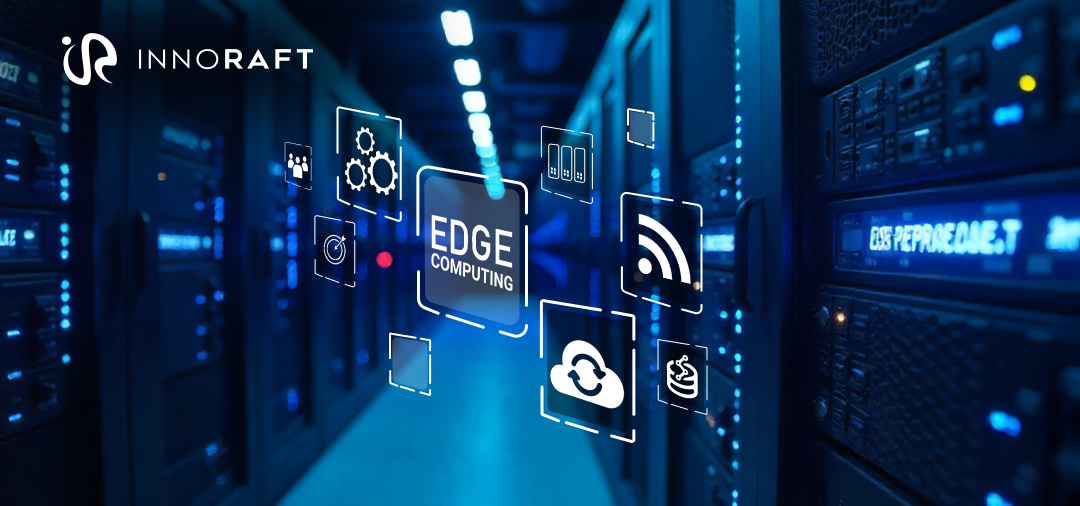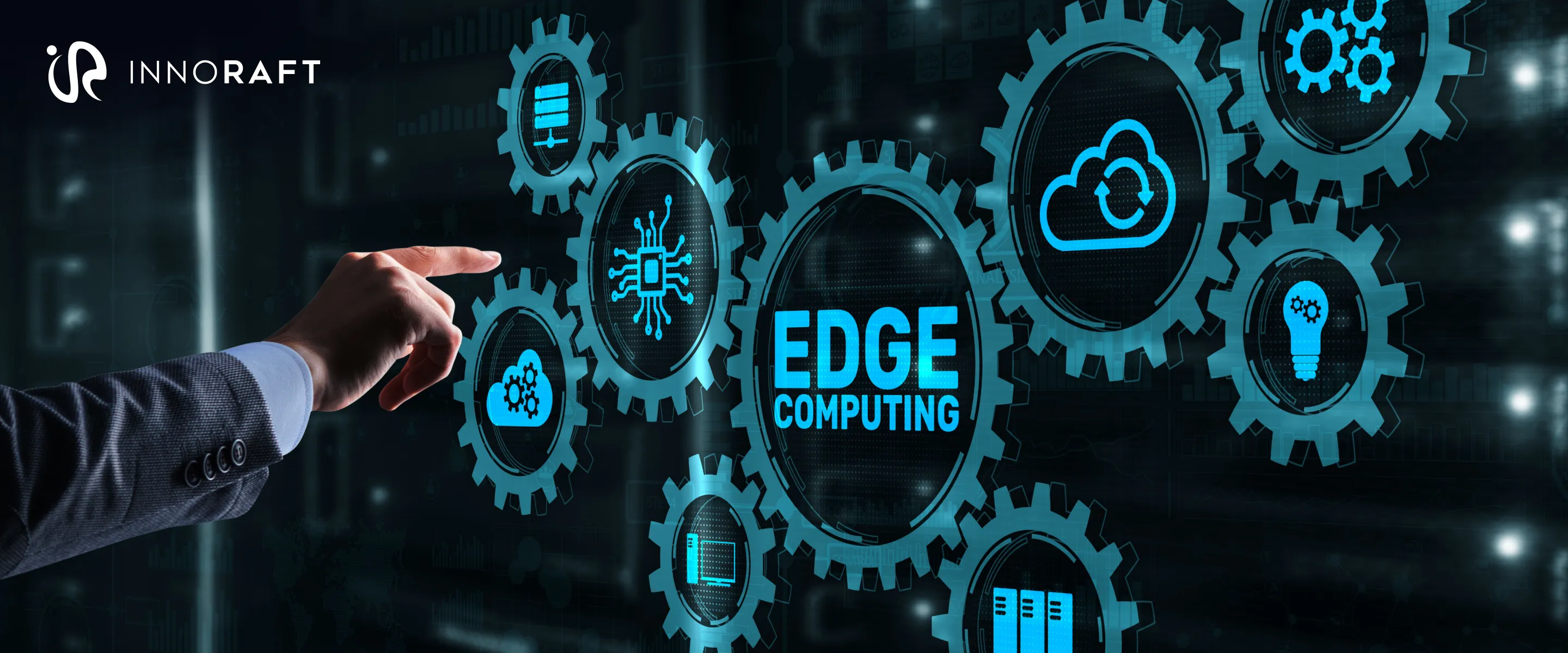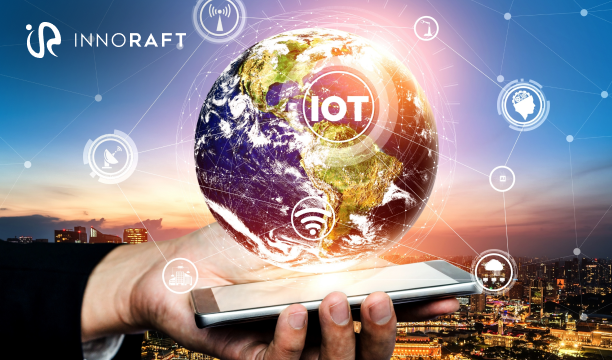Nowadays, companies handle massive amounts of data daily, such as real-time data processing from customer purchases in shops or industrial machinery sensor readings. With the rise of edge computing, data may be processed more relative to its source, allowing for faster decision-making and more valuable customer service. Traditionally, such business data was generally stored on company-managed data centre servers or by third-party vendors.
However, the impact can be significant when the data flow slows down. Delays in real-time data processing, such as slow customer transaction handling, can lead to lost sales. Similarly, lagging analysis of sensor data might damage expensive equipment. These issues highlight a pressing need for greater data processing efficiency. This is where edge computing becomes a game-changing solution.
What are the Benefits of Edge Computing?
Edge computing is an architectural setting in which an efficient data-processing environment is created by taking analysis and computation away from the central cloud and pushing it to the edge of networks. In this transition, data can be processed in real time; thus, information remains quickly accessible to devices and users who may take action on it, thus decreasing latency and outright network congestion.

The global edge computing industry is expected to reach 350 billion US dollars by 2027. The edge strategy improves businesses by enabling new core operations and capabilities, improving monitoring, responsiveness, and site resilience. One of the typical applications of edge computing can be seen in smart home security systems. Take a modern security camera equipped with Edge AI. Instead of transmitting raw footage to a cloud server, the camera performs edge data processing, analyzing live video feeds locally. This approach means only specific events or anomalies are sent to the cloud when necessary, enabling a seamless edge to cloud computing flow.
How does Edge Computing Improve Data Processing?
- Reduced Latency: One of the main factors favoring edge data processing is that it reduces latency by performing ETL-like processing next to the data source. This increases real-time data processing ability, which is essential for time-aware applications like robotic cars, industrial automation, and smart healthcare services. Instant decision-making is required in these few examples of edge computing.
- Bandwidth Efficiency: In an edge to cloud computing model, edge devices filter, analyze, and process data locally. Only the most relevant insights are sent to centralized cloud systems, supporting cloud-native applications, resulting in data processing efficiency and reduced strain on network bandwidth. This is particularly advantageous in bandwidth-constrained environments.
- Enhanced Security and Privacy: With edge data processing, sensitive information can remain on local networks, significantly reducing the exposure to cyber threats during transmission. This localized handling of data strengthens both privacy and system security.
- Scalability: Edge computing enables scalable solutions by distributing processing power across edge devices. This decentralized model effectively manages the massive data volumes produced by IoT sensors, wearables, and industrial systems, making it a critical pillar for future-ready infrastructure.
Top Real-World Applications of Edge Computing
Edge computing has diverse applications, ranging from smartwatches and voice assistants to fleet management, telecom, and predictive maintenance of complex devices. As technologies develop further, the applications of edge computing can only continue to grow. These are some general categories that have been using edge computing so far.
The Internet of Things (IoT)
IoT consists of standard physical objects connected to the Internet, including lightbulbs, televisions, and smartwatches. These devices collect data about the user to generate data. The number of IoT devices globally is expected to exceed 31 billion by 2030. The Internet of Things has various adoption verticals, ranging from wearable devices to smart cars, smart homes, smart cities, and even industrial machines.
Smart Cities
Current trends in human migration depict a rising proportion of the world's population settling in urban areas. This imposes stress on the infrastructure that needs intelligent solutions. The concept of a smart city involves the application of real-time data processing and analytics gleaned from devices such as sensors, cameras, and roadway signals to ensure that both resources and services are being utilized as effectively as possible for the maximum benefit of citizens.
Edge computing in this application enables quicker data processing efficiency and analysis of city system-wide operations, such as energy grid optimization, surveillance camera detection, parking management, streetlight optimization, and traffic management.
Manufacturing and Industry 4.0
Industry 4.0 - also referred to as the fourth industrial revolution - emphasizes automated systems as well as intelligent, data-driven manufacturing processes. One of the most significant developments that will emerge from that transformation is the Smart Factory. Smart factories utilize capabilities and machines within a connected environment that allows them to process data in real-time.
In addition to edge data processing, machines take readings from the factory floor, and data is aggregated from sensors or local devices. The data is analyzed locally using edge computing compared to centralized computing within the cloud.
The edge-to-cloud computing model allows for efficient data processing, minimizing downtime and improving the ability to detect anomalous behavior. Among the many applications of edge computing, this localized computing processing provides factories with a measure of speed to respond to changes in operations so that they can capitalize on new levels of automation, resilience, and productivity.
Healthcare
The health sector has found enormous promise in edge computing in healthcare systems worldwide. It reduces network load, and real-time processing capabilities can substantially influence patient care. Healthcare providers utilize edge computing to allow remote monitoring of vials, automate care delivery, and take advantage of AI diagnostic tools to reduce treatment times. Real-time imaging and patient analytics availability enable doctors to triage, diagnose, and treat patients more efficiently, resulting in better outcomes.
Why is Edge Computing Important for Autonomous Vehicles?
Autonomous vehicles are becoming more popular worldwide for both personal and business purposes. Edge computing is essential to this development, as low-latency responses are essential. Vehicles must be able to interpret sensor data quickly and intuitively to scan the immediate environment, classify what objects and obstacles are present, measure how close they are to those objects with great distinction, accelerate the vehicle properly, and make quick decisions.
By processing data locally, autonomous vehicles can also support real-time communication with nearby vehicles and infrastructure, improving situational awareness, enhancing safety, and ensuring smoother traffic flow even in complex urban environments.
Conclusion
Edge computing denotes a significant shift in how real-time data processing is managed in modern networks. Edge data processing improves data processing efficiency, lowers latency, and eliminates the need for constant cloud connectivity. The applications of edge computing span industries, including healthcare, manufacturing, etc., where immediate data processing is critical. As the environment evolves, new developments in edge and cloud computing are producing an integrated data environment that combines the best of both computing possibilities: localized responsiveness and the ability to scale by leveraging the cloud resources.
As edge computing continues to develop along with other ambient technologies (such as 5G, AI, and, perhaps, blockchain), the impact will only increase through innovation, improved communication, and vastly enhanced data-based decision-making capabilities.
FAQ
Frequently Asked Questions
Didn’t find what you were looking for here?

